25 Proven B2B Lead Generation Strategies for 2023
Casey O'Connor
B2B lead generation is one of the most important parts of the sales process. The number and quality of leads have a direct correlation with a variety of critical KPIs and sales metrics, such as win rate, quota attainment, and revenue.
It’s important that the lead generation process is targeted, efficient, and repeatable. Sales teams and B2B marketers can ensure these things by following a set of strategies and tactics for generating leads.
In this article, we’ll go over some of our best-proven tips from successful sales teams for researching and engaging with high-quality leads.
Here’s what we’ll cover:
- What Is B2B Lead Generation?
- Why Your B2B Company Needs a Lead Generation Plan
- Types of B2B Leads: MQL and SQL
- Who Conducts B2B Lead Generation?
- How Is B2B Lead Generation Conducted?
- 25 B2B Lead Generation Strategies
- B2B Lead Generation Tools
- Successful B2B Lead Generation Examples
What Is B2B Lead Generation?
B2B lead generation refers to the process of finding well-qualified potential customers for your product or service and then engaging them with targeted marketing strategies to persuade them to buy.
 The importance of lead generation cannot be understated.
The importance of lead generation cannot be understated.
Lead generation is the first step in both the sales pipeline and sales funnel. The way you populate the top of your pipeline has a direct impact on the success of the stages that follow.  Much of lead generation relies on gathering accurate, up-to-date contact information for good fits from your target audience. The more data, the better.
Much of lead generation relies on gathering accurate, up-to-date contact information for good fits from your target audience. The more data, the better.
This doesn’t need to be complicated — oftentimes, B2B sales teams can find a plethora of data on potential leads using only a simple search engine. There are also a number of lead gen tools that can help B2B businesses run automated lead generation campaigns that will populate their CRMs with new contacts.
Once sales reps gather the necessary data, they use that information to take action in the next steps of the sales funnel. Salespeople should work closely with their marketing teams to ensure they have engagement strategies to nurture a wide variety of new leads, including:
- Inbound marketing campaigns
- Email marketing for outbound leads
- Content marketing tailored for your ideal customer
- Optimized SEO strategies that lead to high-converting landing pages
The ultimate goal for B2B marketing and sales is to generate a consistent and robust pipeline of leads who have a high chance of converting into customers.
Why Your B2B Company Needs a Lead Generation Plan
As we mentioned earlier, lead generation is one of the most important components of the sales process. The best B2B companies emphasize the need for a predictable, repeatable lead generation plan. Formalizing a strategy for this process comes with a number of benefits.
Consistently Sign New Customers
A well-thought-out lead generation process allows B2B companies to consistently generate new customers for their businesses. It goes without saying that more new leads directly correlates to increased revenues, so it’s no wonder that this is a top priority for most sales and marketing teams.

Even for those prospects who don’t convert right away, adding them to an email list can create future opportunities to nurture and engage through the process until they’re ready to buy.
Increase Conversion Rates
The best lead generation tactics are the ones that attract best-fit potential customers from the very beginning. Content and marketing optimization can help your lead generation strategies lead to higher conversion rates across the remainder of the funnel.
Learn More About Your Perfect Customers
B2B lead generation is about much more than locating contact information; it should also help your team create and/or refine your ideal customer profile. 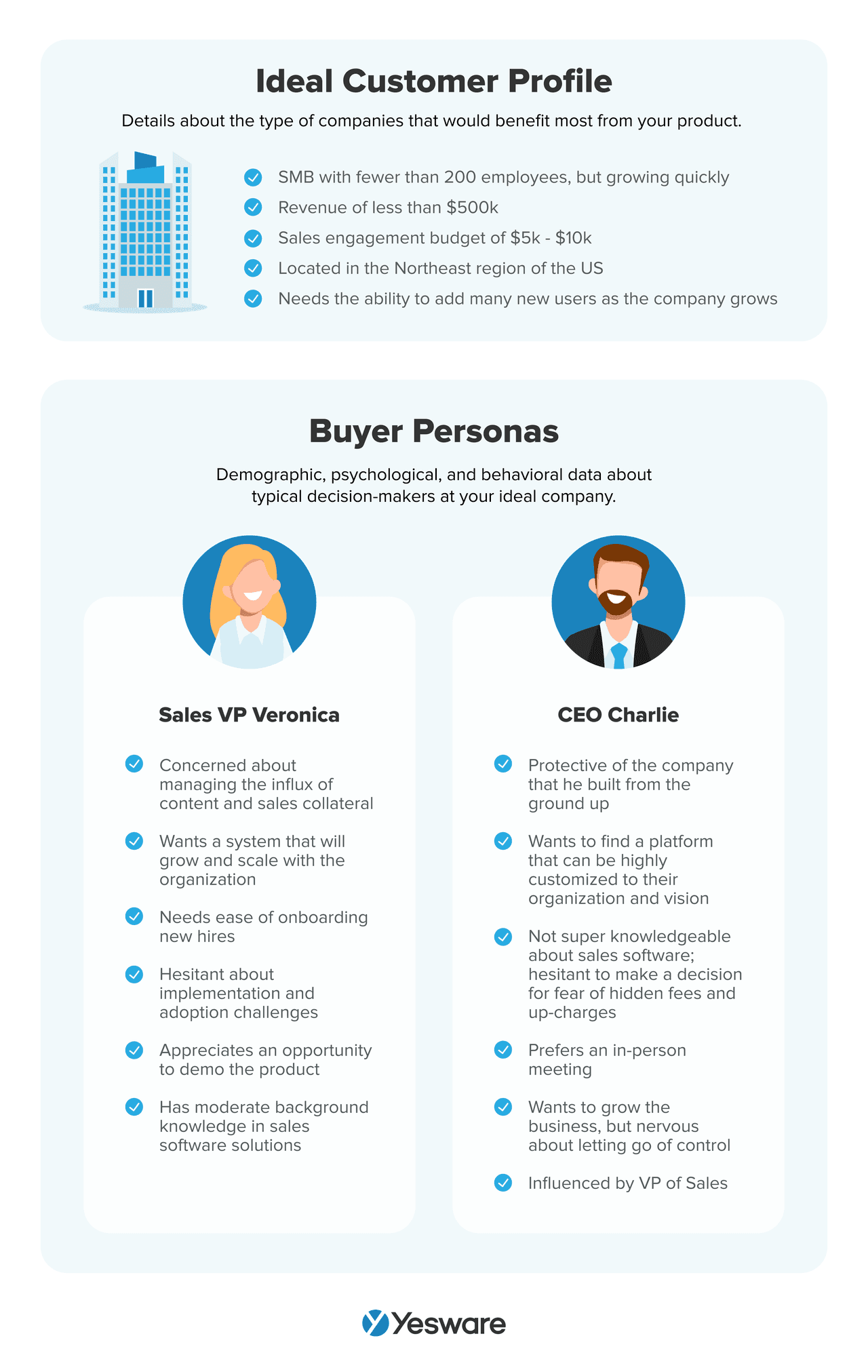 When completed with care and attention to detail, the sales prospecting and lead generation processes can help businesses learn more about what makes decision-makers tick — their goals, pain points, budget, and more.
When completed with care and attention to detail, the sales prospecting and lead generation processes can help businesses learn more about what makes decision-makers tick — their goals, pain points, budget, and more.
Create a Strong Pipeline
The effectiveness of your lead generation efforts has a direct impact on the health of your overall pipeline. Let’s take a look at an example.
In the funnel below, each stage starts with a certain number of leads or prospects. Each stage also has a specific conversion rate.
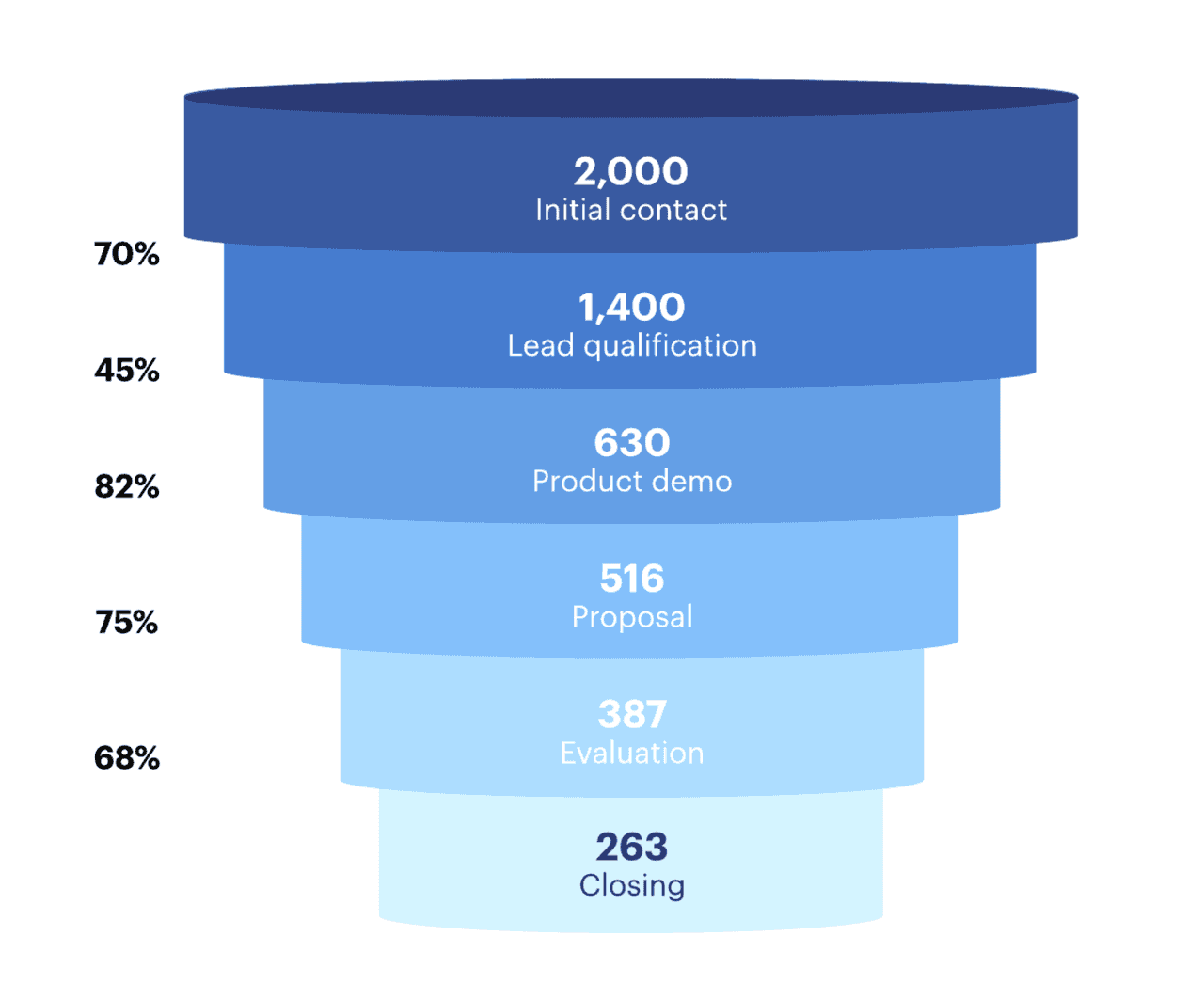
Imagine that your lead generation tactics successfully boost the numbers and conversion rates at the top of the funnel — you’re able to make initial contact with 4,000 good-fit leads and, because your lead generation strategy is highly targeted and optimized, you’re able to convert 80% of them. Those two shifts would lead to over 600 new closed deals.
As you can see, the health of the top of the pipeline has a dramatic trickle-down effect on the stages that follow.
Types of B2B Leads: MQL and SQL
Remember: leads, in general, are people who have been identified as someone who would likely benefit from using your product or service. They may or may not have the intention to purchase at the moment you’ve identified them as a good fit, but they are a good fit nonetheless.
There are two main types of B2B leads: marketing-qualified leads and sales-qualified leads. 
- Marketing-qualified leads (MQLs): Marketing-qualified leads live higher on the funnel than sales-qualified leads. MQLs are businesses that are very likely to benefit from your product or service, and have shown interest in your product based on their engagement with your marketing campaigns. Website visitors and people who download lead magnets (whitepapers, case studies, infographics, etc.) are good examples of MQLs.
- Sales-qualified leads (SQLs): Sales-qualified leads have moved beyond browsing; they have shown more direct intent to buy through any number of avenues. A phone call, email, social media message, or a request for a demo might all represent the transformation from an MQL to an SQL.
Both MQLs and SQLs play an important role in the funnel; one is not necessarily better than the other. Instead, the goal is to generate as many MQLs as possible, and convert the highest possible percentage of them into SQLs.
There are many marketing automation tools that can ease the process of generating MQLs and SQLs — check out our post here on some of our favorites.
Who Conducts B2B Lead Generation?
The companies that enjoy robust lead generation and a full, ever-increasing sales pipeline know that both sales and marketing are equally and symbiotically responsible for its success.
Ideally, each department should make their own contribution to the process, but it should ultimately be collaborated on and seamlessly jointly executed.
Sales
There are generally two types of sales professionals that deal with lead generation: sales development reps (SDRs) and business development managers (BDMs). Each has their own unique role and responsibilities in lead generation.
SDRs interact with new leads at the beginning of the pipeline. They generally handle the sourcing and initial scoring of leads, and they book meetings for business development managers.
BDRs are responsible for conducting demos with well-qualified leads, and closing deals that generate revenue for the business.
These two groups work together to meet the needs of leads throughout all the stages of the pipeline.
Marketing
The marketing department is responsible for creating and curating the content and other sales campaigns that attract leads in the first place.
Most marketers are categorized according to one of two approaches: demand generation marketing or growth hacker marketing.
Demand generation marketers take a holistic approach to planning their campaigns, with a big-picture focus on the entire journey from lead generation to creating customers who advocate for your brand.
Growth hackers, on the other hand, take a faster and, usually, more economical approach to generate leads. They work to fill the pipeline as quickly and as affordably as possible. Growth hackers are great at stacking the front end of the pipeline, but their strategies are typically not as scalable as those of demand-generation marketers.
Despite their differences, both groups focus heavily on attracting a large volume of leads and use data from the process to continuously improve it.
How Is B2B Lead Generation Conducted?
Sales and marketing each have a role to play in conducting lead generation, regardless of industry or organization.
Ideally, the two departments will be cohesively aligned and create lead generation strategies together (more on that alignment in the next section).
Following is some insight into what each of those two departments might be responsible for.
Sales
The sales department is responsible for all things B2B outbound. They manage:
- Cold calling
- Cold emailing (usually with the help of email automation platforms like Yesware)
- Building relationships through social selling on platforms like LinkedIn
- Qualifying leads
The specific time and context in which a sales rep decides to use each of those components of B2B outbound is called their sales cadence.
Marketing
Marketing’s role in lead generation is also known as demand generation.
Here are three examples of ways a marketing department might approach demand generation:
- Growth hacking (more on this in the next section)
- Content marketing, in which marketing creates and advertises valuable, relevant content like blog posts, webinars, guides, videos, podcasts, whitepapers, eBooks, etc.
- Account-based marketing (ABM), in which marketing works to identify companies that have a high likelihood of success with the product, and tailoring their marketing to that particular company
The more familiar the sales team is with the marketing team’s strategies, the more successful both teams will ultimately be.
25 B2B Lead Generation Strategies
Here are 25 of our best tested-and-proven strategies for filing your pipeline with highly qualified leads.
1. Align Sales & Marketing
If you take only one step in improving your B2B lead generation process, it should be to implement a sales and marketing alignment strategy to get teams on the same page.
These two teams absolutely must collaborate with one another in order to generate the best results. And the benefits don’t stop with more and better-qualified leads; aligning sales and marketing leads to improved results across the board.
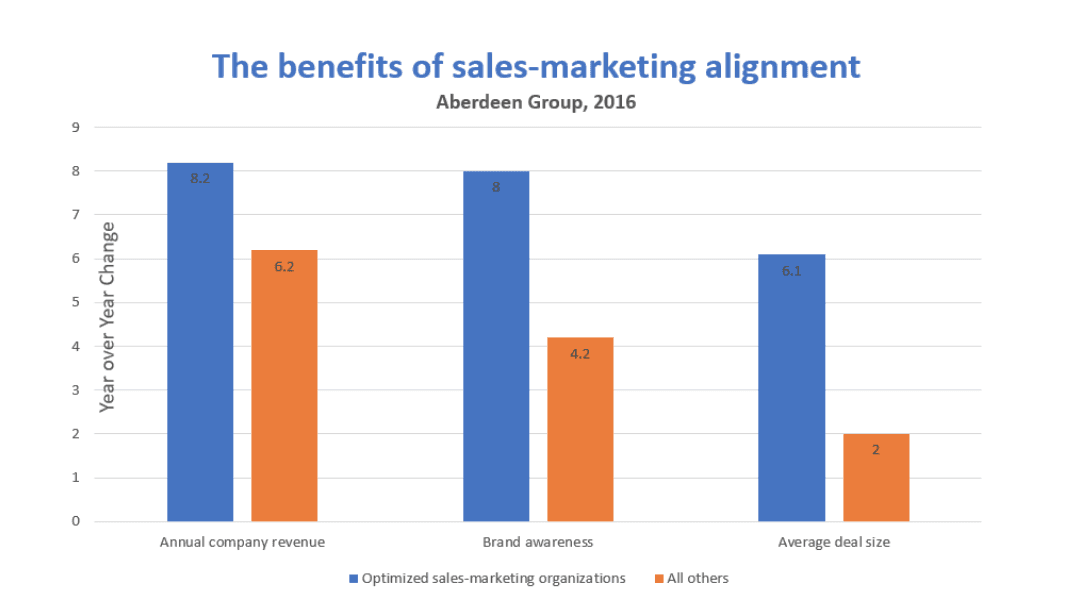
2. Don’t Skip Cold Outreach
Cold calling and cold emailing get a bad reputation in the sales world for being time-consuming, awkward, and unproductive. Don’t buy into this negativity!
Cold outreach can be a very effective strategy for generating new and productive leads.

As shown above, studies show that many sales reps believe cold outreach generates as many leads as inbound strategies.
Tip: Looking to do more cold outreach? Grab some of our proven cold email formulas below.
 10 Cold Email Formulas That Just Plain WorkSee how B2B sales professionals are using these cold email templates to engage more prospects, fill the top of their funnel and build more sales pipeline faster.
10 Cold Email Formulas That Just Plain WorkSee how B2B sales professionals are using these cold email templates to engage more prospects, fill the top of their funnel and build more sales pipeline faster.
3. Divide and Conquer
Many sales teams choose to split into specialized groups to streamline the process. The specific organizational structure will depend on the unique needs, talents, and goals of your team.
Roles may include:
- Sales development reps (responsible for sourcing leads and booking meetings)
- Business development reps (responsible for conducting demos and closing deals)
- Customer success reps (responsible for ensuring a smooth onboarding process and upselling when appropriate)
4. Leverage Social Media
There’s no way around it: social selling is here to stay. And for good reason — check out some of the most popular benefits of this digital strategy:

If your team isn’t already tapping into the enormous reach that social media can offer, now is the time to start. In addition to the benefits outlined above, social selling also provides a very effective avenue for remarketing.
5. Go Outside the Box
There’s a new buzzword in the sales world, and it’s gaining well-deserved traction: growth hacking. Growth hacking blends marketing, product, and data strategies to identify the most efficient methods of growth.

Growth hacking strategies are also typically known for being simple and low-cost, making many of them easily accessible for startups and small businesses.
6. Use an Email Finder Tool
One of the best ways to find someone’s email address is to use an email finder tool. We may be biased, but Yesware was made for what lead generation sales reps really need.
The Prospector feature gives sellers access to verified business phone numbers, emails, LinkedIn profiles, and other valuable contact information. You can add them to your Contacts in a single click.

The Contacts feature helps you manage your interactions with each of those prospects, capturing every touchpoint from every channel. This information lives in your inbox so you can speed up workflows and drop contacts into your best campaigns in seconds.

Interested in Yesware? Try for free.
7. Content Is King
Content marketing is another important piece of an effective B2B lead generation plan. Like social selling, content marketing provides a number of overall benefits to your business.
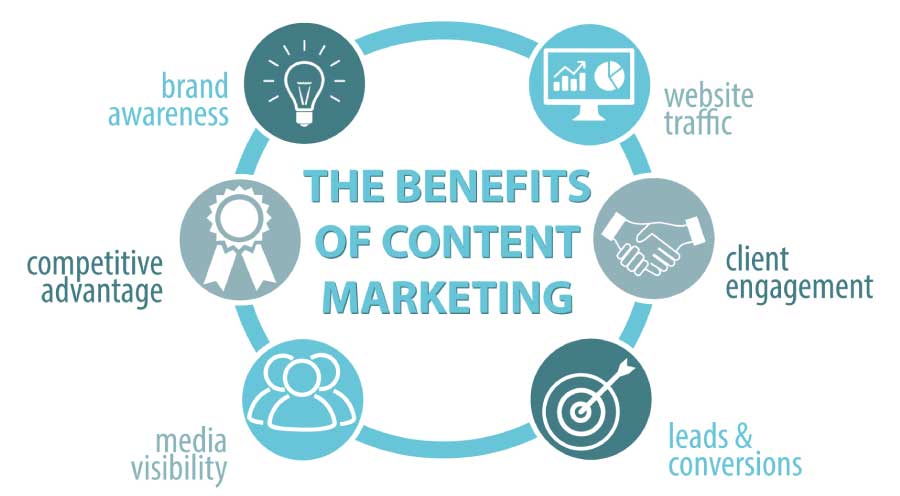
If your team uses content marketing strategies, this is another important reason to align sales and marketing teams. A sales enablement strategy can also assist in making sure salespeople have the appropriate content for each unique client.
8. Automate Everything
It’s no secret that salespeople today are busier than they’ve ever been. Unfortunately, this increase in workload doesn’t always translate to an increase in new business. In fact, sales reps today only spend about 36% of their time on revenue-generating sales activities; the rest is spent on non-productive administrative activities.

We’re fortunate to live in a day and age where automation is literally at our fingertips — use this to your team’s advantage. Automate whatever you can, so that your team can focus on the sales activities that matter most.
9. Try Your Hand With Webinars
The webinar is another “trendy” sales topic that seems to have some staying power. That’s because they’re low-cost, high-engagement conversion machines.

While it may seem intimidating to consider adding yet another marketing tactic to your toolbelt, it’s worth the effort — and probably not as challenging as you might think. In fact, there are many webinar templates and other free tools available online that can get you off the ground running.
10. Build Your ICP
Trying to generate leads without a defined ideal customer profile is like trying to find a light switch in the dark.
Spend some time developing your ICP if you haven’t already.

Your ICP will act as your marketing North Star, ensuring your efforts are directed at the right leads from the very beginning.
11. Make Yourself Visible
Having your own content library in the form of a blog or some other kind of public forum is a great way to position yourself as a thought leader in the industry and generate leads.
You can also consider taking that strategy a step further by arranging guest posting opportunities on forums like Quora or other blogs adjacent to your field. This offers a number of benefits, even beyond lead generation.

12. Make Your Web Pages Dynamic
Certain technology now gives website owners the ability to create dynamic pages that change and adapt according to a visitor’s name, location, and other criteria.

This is a relatively easy, automated way to personalize the buyer’s journey, even in the early stages of lead generation.
13. Perfect Your Lead Magnet
A lead magnet is a powerful tool for attracting lots of well-qualified leads in a way that makes them feel like they’re getting something of value.

Offer your lead magnet in exchange for leads’ contact information to fill your pipeline with engaged prospects.
14. Run A/B tests
Data is your best friend when it comes to lead generation. Use A/B testing to determine which strategy, copy, content, or platform is most effective for each of your campaigns.  There’s no limit to what or how much A/B testing you can do, so play around with as many variations as you like until you’re confident your lead generation strategies are fully optimized.
There’s no limit to what or how much A/B testing you can do, so play around with as many variations as you like until you’re confident your lead generation strategies are fully optimized.
15. Consider Visual Learners
Video is becoming a more and more popular format for marketers, and for good reason — data shows that online video is 6000% more effective as a marketing tool than print and direct mail combined.

By adding video content to your lead generation strategies, you broaden your audience and create engaged prospects to fill the pipeline.
16. Optimize Each of Your Platforms
It’s important that your business has a presence on the major social media platforms — LinkedIn, Facebook, and Twitter are the big ones, but there may be others that are also relevant, depending on your industry.
It’s equally important, though, to make sure you’re leveraging each platform to its fullest extent — that means it’s up to you to get to know the differences between each of them and optimize your various profiles accordingly.
Tip: 40 ways to use LinkedIn for sales here.
17. Pay Attention to Mobile Formatting
Many leads are needlessly lost when a business’s website or content isn’t mobile-friendly. Over 60% of buyers report that they will quickly move on to a competitor if your website isn’t mobile-friendly. This is another easy tech hack that works wonders for boosting your B2B lead generation efforts.
This is another easy tech hack that works wonders for boosting your B2B lead generation efforts.
18. Leverage Long-Tail Keywords
Many content creators assume that they need to prioritize the “popular” keywords that get tons of monthly searches. While it’s true that these overarching “umbrella” keywords are important for your SEO strategy, long-tail keywords actually represent the vast majority of internet searches.
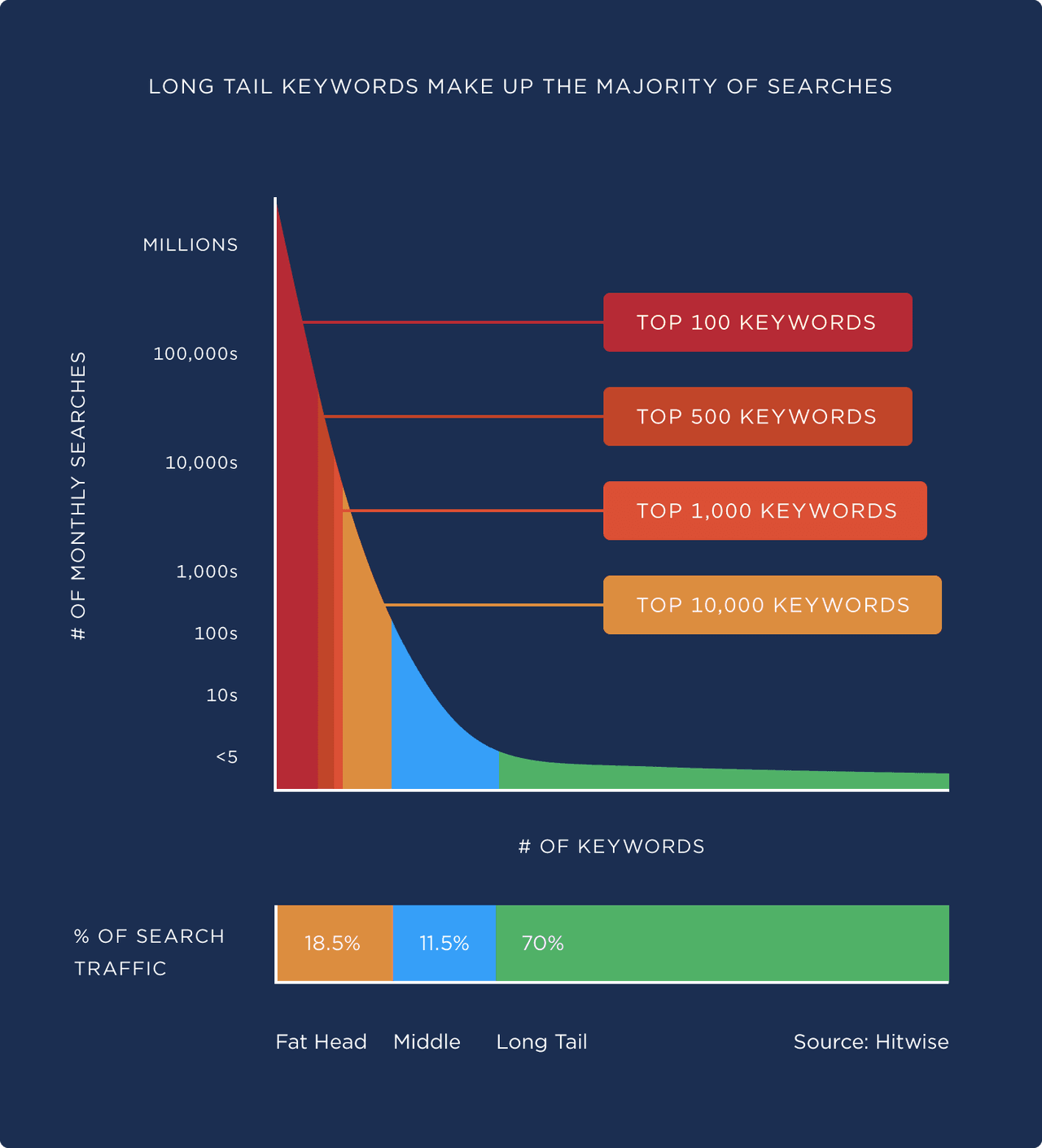
Make sure your SEO strategy includes a focus on long-tail keywords that can help you capture leads from every corner.
19. Create Chatbot
Chatbots are a great way to draw in leads, even if you don’t have a sales rep immediately available to engage with them.

AI bots are an easy, affordable way to generate more leads and keep them engaged. They also increase customer satisfaction.
20. Focus on Customer Satisfaction
Speaking of customer satisfaction, it has a surprising effect on lead generation, despite its position at the other end of the funnel.
One surefire way to generate more leads is to make your current customers outstandingly satisfied with their experience. Happy customers make fantastic ambassadors for your brand and can encourage new leads to check out your product.
21. Create Referral Incentives
You can also go the extra mile and sweeten the pot for current customers by offering incentives for successful referrals.
Although it may seem counterintuitive — paying a customer to find new customers for you might seem a bit like cheating the system — referrals are actually incredibly powerful for your business in more ways than just lead generation.

Tip: We walk through how to get referrals from customers here.
22. Account-Based Marketing
Account-based marketing is a marketing and sales strategy in which teams identify and research specific companies that they believe would be a great fit for the product, and reach out to them on an individual basis.
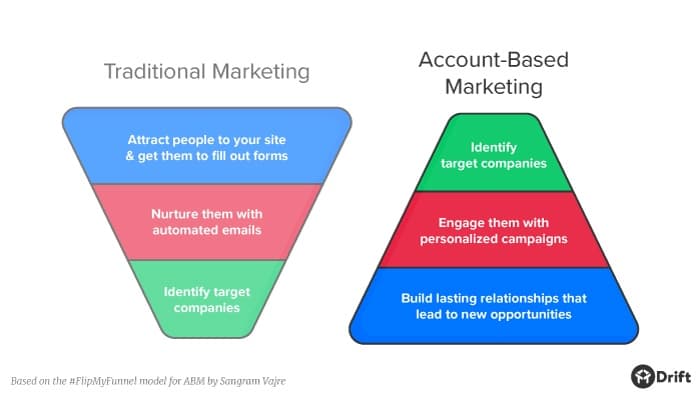
Some studies show that account-based marketing has an 80% higher close rate than traditional marketing strategies, so it may be worth exploring for your team.
23. Use Sales Intelligence Tools
Sales intelligence is the data that B2B sales reps collect about their potential buyers. There are some software platforms that can help automate the process of collecting, storing, and leveraging sales intelligence. 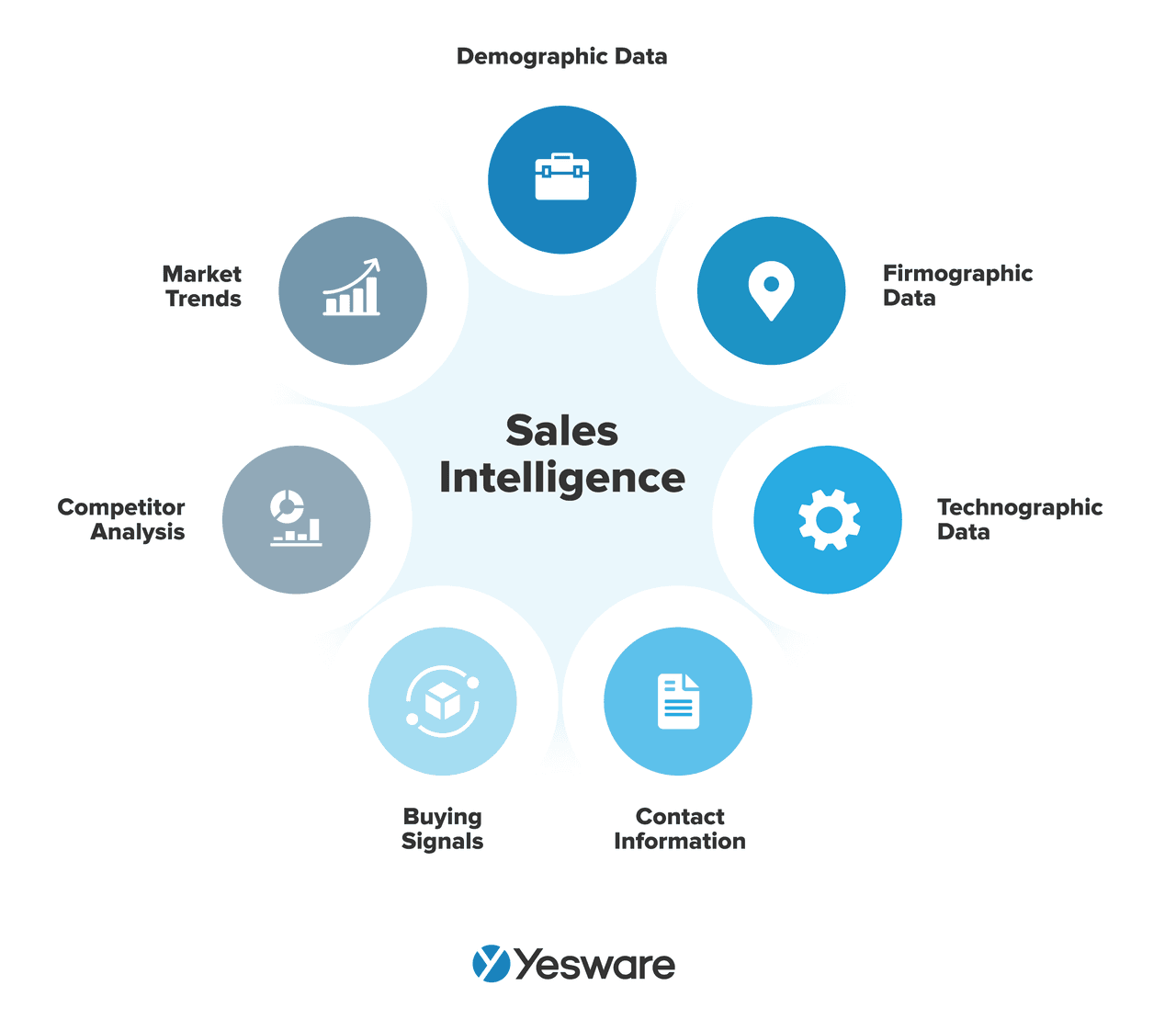 The sales intelligence market is expected to more than double by 2030, so adopting sales intelligence tools now would put you ahead of the curve.
The sales intelligence market is expected to more than double by 2030, so adopting sales intelligence tools now would put you ahead of the curve.
24. Dive Into Search Intent
Everyone who performs an internet search does so with a purpose. Some do it for research; some click with the direct intent to purchase.
The reason behind a prospect’s search is known as search intent, and it can give valuable insight into where they are in the buyer’s journey.

Over 80% of searches are informational — but don’t let that discourage you. There’s power in knowing a buyer’s intent, regardless of what it is.
You could, for example, use that knowledge to design your marketing strategies around their desire for information by putting relevant, valuable content at their fingertips, with a reason to come back for more.
25. Master the Act of Retargeting
Retargeting is the process of targeting advertising to a lead who has already expressed interest in or made contact with your organization.  Research shows that retargeting when used with other marketing strategies, can increase sales by up to 50%.
Research shows that retargeting when used with other marketing strategies, can increase sales by up to 50%.
B2B Lead Generation Tools
Now let’s look at some tools to help you accelerate your B2B lead generation strategies.
Yesware
Yesware is a sales rep’s toolbox for planning, managing, tracking, and analyzing lead generation and outreach activity. The tool helps you scale your B2B lead generation process and improve your customer outreach.
After finding contacts through the Prospector feature discussed above, you can send automated, multi-touch, and multi-channel campaigns right from your Gmail or Outlook inbox.

Then, track all outreach through the reporting and analytics features which provides a streamlined analysis of what is/isn’t working so you can improve workflows and share best-performing campaigns with your team.
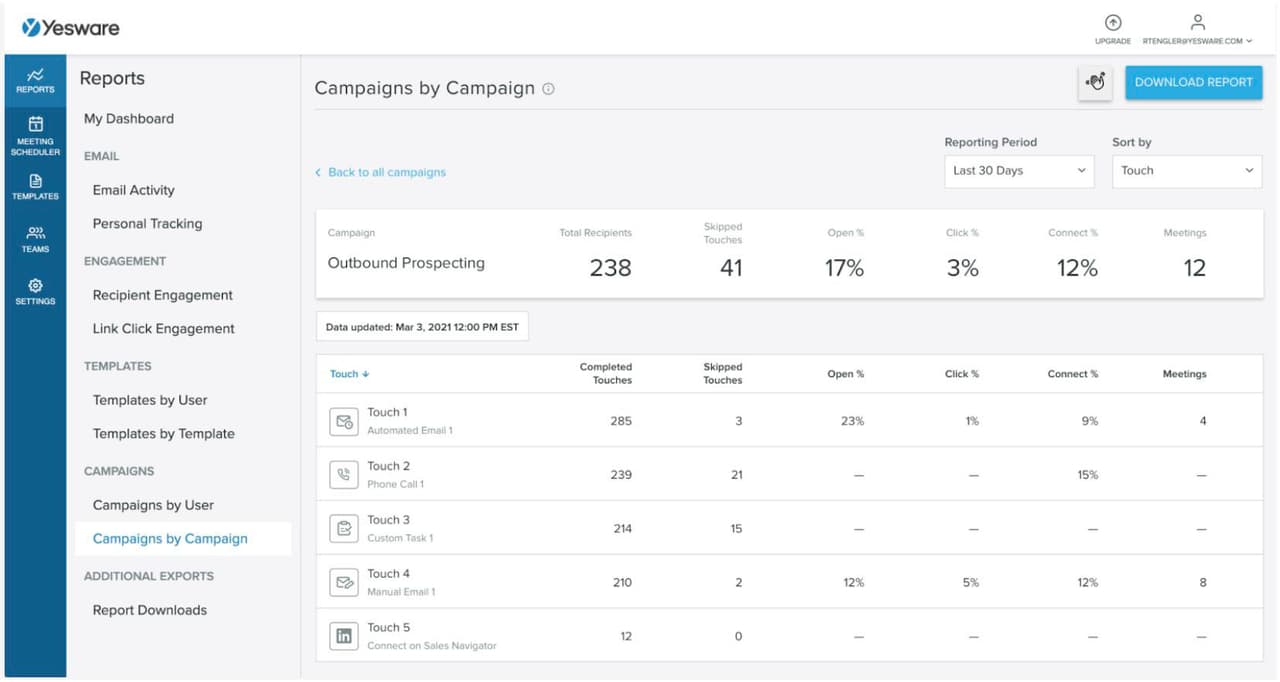
This will enable you to give a customized experience for each recipient, making automated personalization truly scalable.
With over 900 million users worldwide, LinkedIn is the world’s most popular professional social media platform.
Salespeople can leverage use LinkedIn to connect with buyers, learn more about leads, and build business relationships.

It also has the highest visit-to-lead conversion rate compared to the other two leading social media platforms.

Learning how to navigate and leverage LinkedIn can help you improve your B2B lead generation strategies.
Drift
Drift allows you to speak to your website visitors in real-time, where you can automatically engage and connect buyers to sales reps.

Chatbots have become increasingly more popular; these tools can answer up to 80% of routine questions.

Not only does this help move new leads further down the pipeline, but it also frees up quite a bit of salespeople’s time so that they can focus on questions that will genuinely qualify the lead.
Tip: More lead generation tools here.
Successful B2B Lead Generation Examples
Different lead generation strategies will be most effective for different companies at various points in their operation. In fact, most successful companies use a variety of lead generation strategies all at once.
Here are a few examples of well-known companies using lead generation strategies effectively.
Warby Parker
Trendy glasses company Warby Parker engages new leads with a quiz about their eyewear needs.

Quizzes are a great lead generation strategy; not only are they fun and interactive for your leads, they also help you learn more about them.
DDP Yoga
Small yoga studio DDP Yoga went viral with their video case study, an emotional testimonial that has clocked 31 million views and counting.

The video documents how Vance transformed his body and his life over the course of the year with the help of DDP.
Interesting to note is that DDP’s video doesn’t actually contain a single call to action. The results documented in the ad are so powerful, they speak for themselves. This video is a great example of the fact that even a seemingly simple lead generation strategy can be extremely powerful if the messaging resonates powerfully.
Tesla
Tesla’s referral program, which came to a close in 2019, was well-known for creating hot demand with lucrative offers to customers who successfully signed on new Tesla customers.

The company offered customers incentives like free Supercharging or the chance to win a next-generation Roadster (valued at over $250k).
All-in-all, B2B lead generation is essential for your business. Aligning sales and marketing and streamlining a lead generation process will undoubtedly bring in more buyers and produce repeatable revenue for your team.
This guide was updated on March 1st, 2023.
Get sales tips and strategies delivered straight to your inbox.
Yesware will help you generate more sales right from your inbox. Try our Outlook add-on or Gmail Chrome extension for free, forever!
Related Articles
Casey O'Connor
Casey O'Connor
Anya Vitko
Sales, deal management, and communication tips for your inbox

